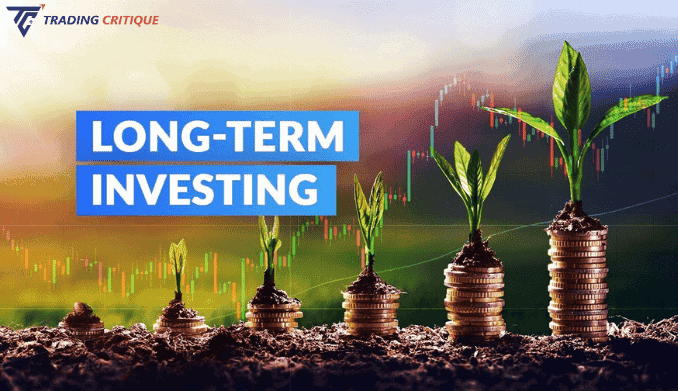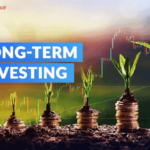Long-Term Investments
Investing means getting something to make money or increase in value over time. It’s about using resources today—like time, money, or assets—with the hope of getting back more in the future. For example, you might buy a financial asset now, expecting it to bring in income later or be sold for a profit. Long-term Investments benefit investors in the long run. Leveraging these investments for future needs is the aim, not selling them for a profit right away. Through interest or dividends, they give the business a steady flow of money that it can use for ordinary business activities.
Long-term Investments find their place on the asset side of the balance sheet. Unlike speculative or day trading endeavors, this investment strategy isn’t suitable for those seeking rapid wealth accumulation. The benefits of this approach become more favorable the longer you choose to hold your investments.
How Do Long-term Investments Work
Investors often choose to invest for the long term when they have extra money that they can leave invested for an extended period. Investing in assets for the long term requires a great deal of patience, as the holding period can stretch for decades. Despite the extended timeframe, Long-term assets have the potential to yield excellent returns, thanks to the power of compounding. The longer an investor holds onto an asset, the more returns the asset is likely to generate.
Putting money into retirement schemes is also seen as a Long-term Investment. Many individuals build an investment portfolio primarily for retirement planning. Starting early provides individuals with ample time until retirement to build a substantial sum, thanks to the compounding effect. Additionally, holding investments for a long time allows investors to comfortably navigate the sensible risks associated with them. Over the long run, market fluctuations and risks like inflation and downturns tend to balance out through rupee-cost averaging. This strategy enables investors to achieve an overall higher return in the end.
Exploring Long-term Investment Opportunities
Long-term Investment options include selections such as Stocks, Bonds, Real estate, and cash equivalents. Selecting the right option is vital for returns and capital growth. Despite short-term volatility, equities prove beneficial over time. Bonds offer steady income, Real estate tends to appreciate, and cash equivalents ensure stability with low risk. These options serve unique purposes, making Long-term Investments a diverse and strategic financial decision.
- Diverse Categories: Long-term Investments come in different types, such as Stocks, Bonds, Real estate, and cash equivalents, depending on the chosen instrument.
- Equity Shares: Investing in a company’s equity shares is considered among the top Long-term options due to its potential for higher returns and capital appreciation.
- Volatility in Equities: Equities can be volatile, particularly in the near run. Despite this, Long-term Investments in Stocks and equities have proven to be advantageous. During challenging market times like the COVID-19 era, patient investors reaped unexpected gains as markets recovered.
- Bonds for Steady Income: Bonds, representing investments in fixed-income markets like debentures or G-Secs, assure a steady income through interest.
- Real Estate Investments: Properties, including land and buildings, are Long-term Investments in Real estate. Their value tends to increase over the long run.
- Cash Equivalent Investments: Cash equivalents include investments made in high-interest savings accounts, certificates of deposit (CDs), and other similar instruments. Though offering lower returns, these investments provide stability with little or no associated risks, making them attractive for retirement planning.
Comparison between Long-term Investments and Short-Term Investments
Long-term and short-term investments not only vary based on their names but also differ in various other aspects.
| Long-term Investments | Short-Term Investments |
|---|---|
| Held for an extended period, allowing gradual growth over time. | Short-term investments are marked by swift returns and the possibility of quick losses. |
| Can wait for market recovery during economic downturns. | Cannot afford to wait for market rebounds and requires swift decision-making. |
| Choice depends on the investor’s goals and intended purpose. | Opting for less risk favors short-term options, which are manageable even in the case of losses. |
| Long-term options may lead to adverse effects but can yield unexpectedly high returns. | – |
Long-term Investing-Companies vs. Individuals
In the complex landscape of Long-term Investments, both companies and individuals follow distinct paths with unique considerations. Let’s delve into them below.
| Aspect | Long-term Investing for Companies | Long-term Investing for Individuals |
|---|---|---|
| Definition | Long-term Investments include cash held for more than a year, Stocks, Bonds, and Real estate on the asset side of the balance sheet. | Mainly involves retirement savings as the primary Long-term goal, with other projects like buying a car or a house. Another common belief is that Real estate is a Long-term Investment. |
| Asset Valuation Impact | Classification (short-term or Long-term) affects how assets are valued. Short-term investments are marked-to-market, impacting net income immediately. | Mutual funds, Stocks, and Exchange-traded funds (ETFs) can be invested in for the long term or the short term, with varying tax consequences. Capital gains tax is imposed on profitable securities that are sold after one year. |
| Significance of Changes | Analysts monitor changes in Long-term assets. Liquidation to cover current expenses may indicate a problem. | People are urged to make frequent investments and to start early. Long-term outlook and compounding used to mitigate market downturns and risks. |
| Tax Implications | Not specifically mentioned for companies. | Securities that are profitable and sold after a year are subject to individual capital gains tax. Tax treatment varies for gains made in the short term. |
| Investment Approach | Not specifically mentioned for companies. | Individuals are encouraged to embrace calculated risks, leveraging the benefits of compounding and adopting a long-term perspective, especially when considering the years leading up to retirement. |
Long-term Investment Strategy
You require perseverance, self-control, preparation, and resolve. It all comes down to coming out on top in the little conflicts along the way. These are some simple pointers to help you succeed in Long-term investing.
Strategy Focused on Current Income
- Seek well-established entities offering above-average distributions, such as large-cap and blue-chip Stocks.
- Emphasize Long-term considerations like competitive advantage, growth prospects, and effective management.
- Give preference to businesses that have a history of consistent or growing dividend payments.
- View rare events causing temporary stock declines as potential opportunities.
- Select companies in stable, growing industries like consumer staples.
Strategy Centered on Capital Growth
- Strive to maximize portfolio appreciation over 10 years or more.
- Add Mutual funds, Stocks, and Exchange-traded funds (ETFs) to the Investing portfolio.
- Adjust the stock mix according to your level of Risk tolerance.
- Pursue maximum capital appreciation through potentially risky, aggressive allocation.
- Utilize target-date funds for specific objectives like funding education or retirement, adjusting risk over time.
Balanced Investment Strategy
- Combine Stocks and Bonds in a portfolio to achieve a balance between risks and returns.
- Allocate equal percentages to Stocks and Bonds in the investment portfolio.
- Ideal for those with a modest tolerance for risk.
- Incorporate low-yielding but secure instruments like high-grade Bonds for capital preservation.
- Include riskier, higher-yielding Stocks like preference shares and equities in companies with low market capitalization and credit ratings for aggressive capital growth.
Long-term Investments with Example
Consider a scenario where a business owner wants to expand operations and decides to acquire a 400-acre piece of land. They utilize 100 acres for parking and inventory, reserving the remaining 300 acres for potential sale to another business in need of space. In this context, the 100 acres used for business purposes qualify as a Long-term asset.
Similarly, Investing in Stocks over an extended period also falls under Long-term Investments. Over time, this approach provides the opportunity to achieve substantial returns, commonly known as multibagger returns.
Top 10 Excellent Choices for Long-term Investments
Discover a variety of Long-term Investment options with our top 10 list. Whether it’s high-growth tech Stocks or hands-off retirement planning with target-date funds, each type suits different preferences and risk levels. Explore to find the right fit for your Financial goals, grasp potential risks, and unlock rewarding possibilities in the dynamic world of Long-term Investments.
| No | Investment Type | Overview | Who It’s Good For | Risks | Rewards | Where to Get Them |
|---|---|---|---|---|---|---|
| 1 | Growth Stocks | Growth Stocks, comparable to Ferraris in the stock market, promise high growth and returns, often from tech companies. | Investors with high Risk tolerance and a Long-term perspective. | High valuation risk during market downturns | Potential limitless returns from high-growth companies | Stock market or brokerage platforms |
| 2 | Stock Funds | Stock funds pool various Stocks, offering a low-effort option for investors wanting stock exposure without analyzing individual Stocks. | Investors seeking a less risky and diversified stock portfolio. | Market fluctuations, potential lack of Diversification | Stable returns with potential upside from diversified holdings | ETFs or Mutual funds through brokerage platforms |
| 3 | Bond Funds | Bond funds provide a diversified portfolio of Bonds, suitable for investors wanting stable returns without analyzing individual Bonds. | Investors looking for stable returns and Diversification. | Fluctuations in response to interest rate changes | Safer returns with Diversification; typically lower risk | Mutual funds or bond ETFs through brokerage platforms |
| 4 | Dividend Stocks | Dividend Stocks pay regular dividends, offering income and potential growth; they are suitable for Long-term, income-focused investors. | Long-term investors seeking income and stability. | Market fluctuations, potential dividend cuts | Regular income with the potential for dividend growth | Stock market or dividend-focused funds |
| 5 | Value Stocks | Value Stocks, cheaper on valuation metrics, can be defensive in market downturns, appealing to investors seeking stable returns. | Investors looking for defensive options during market highs. | Market fluctuations, potential undervaluation | Above-average returns with less risk | Stock market or value-focused funds |
| 6 | Target-Date Funds | Target-date funds automatically adjust Asset allocation based on the investor’s age, offering a hands-off approach to retirement planning. | Investors seeking a hands-off retirement strategy. | Risks similar to stock or bond funds with changing allocations | Safety through gradual shift to more conservative investments | Workplace 401(k) plans or investment firms |
| 7 | Real Estate | Real estate, a Long-term Investment, involves property ownership, offering potential returns but requiring active management. | Individuals wanting to be landlords and benefit from tax advantages. | Market fluctuations, property management challenges | High returns with successful property selection and management | Real estate platforms or property ownership |
| 8 | Small-Cap Stocks | Small-cap Stocks, often from smaller companies, can be high-growth but come with higher volatility, suitable for risk-tolerant investors. | Investors willing to analyze and tolerate high volatility. | Market fluctuations, business risk of smaller companies | Immense returns if successful; potential for high volatility | Stock market or small-cap focused funds |
| 9 | Robo-Advisor Portfolio | Robo-advisors automatically invest based on user preferences, offering a hands-free and diversified investment approach. | Investors seeking a low-effort, diversified investment strategy. | Risks depend on chosen investments; market volatility | Broadly diversified portfolios with ease of management | Robo-advisor platforms like Wealthfront or Betterment |
| 10 | Roth IRA | A Roth IRA is a retirement account allowing tax-free growth and withdrawals, ideal for anyone looking to build tax-free assets. | Individuals earning income planning for tax-free retirement. | Risks depend on chosen investments within the Roth IRA | Tax-free growth, withdrawals, and potential wealth transfer | Brokerages offering Roth IRA accounts |
Advantages of Long-term Stock Investing
Long-term investing means keeping your investments, like Stocks and Bonds, for more than a year. It requires patience and discipline to handle risks and market changes. One of the best ways to increase money over time is to invest in Stocks.
Enhanced Returns with Stocks
- Historically, over long periods, Stocks have outperformed other asset types.
- The S&P 500, a benchmark for stock market performance, boasted an average annual return of 11.82% from 1928 to 2021.
- This outperformance is notably superior to the returns from alternative investment options like Treasury bills and notes.
Navigating Market Volatility
- Stocks are considered Long-term Investments due to the potential for short-term volatility, including 10-20% drops.
- Holding through market fluctuations, even during significant events like the Great Depression or financial crises, tends to result in better Long-term returns.
- Historical analysis suggests that individuals rarely experienced losses Investing in the S&P 500 over a 20-year horizon.
Investor Decision Challenges
- Emotional reactions often drive investor decisions, impacting their ability to stay committed to Long-term strategies.
- Dalbar’s study highlights that investors, influenced by emotions, tend to exhibit poor market timing.
- Fear-driven decisions, such as withdrawing during market downturns and re-entering when gains are already achieved, contribute to suboptimal returns.
Tax Advantages for Long-term Holders
- Profits from Stocks held for over a year are taxed at a maximum rate of 20%, providing a tax advantage.
- Short-term gains, realized within a year, may face higher tax rates, reaching up to 37%.
- The lower tax burden on Long-term capital gains enhances the tax efficiency of a patient and strategic investment approach.
Cost-Effective Long-term Approach
- Long-term holding reduces transaction costs and taxes, making it a cost-effective strategy.
- Frequent buying and selling incur higher transaction fees and tax liabilities, diminishing overall returns.
- Tax efficiency and reduced transaction costs contribute to the financial effectiveness of a Long-term Investment approach.
Compounding Benefits with Dividend Stocks
- Dividends, a share in corporate profits, can be reinvested, harnessing the power of compounding.
- ReInvesting dividends ensures that the interest generated compounds over time, augmenting the overall value of the investment.
- This strategy mirrors the concept of Compound interest seen in Bonds or Mutual funds.
Optimal Stock Selection for Long-term Investors
- Consideration of personal factors like age, Risk tolerance, and investment goals is crucial when selecting Stocks.
- Index funds, which track specific market indexes like the S&P 500, offer diversified exposure at lower costs.
- Stocks that generate dividends offer a consistent income stream with the possibility of reinvestment.
- High-growth companies, while carrying higher risk, have the potential to contribute significantly to portfolio growth.
Consultation with Financial Professionals
- Getting guidance from financial experts is highly recommended, especially for those who are unfamiliar with the world of Investing.
- Financial professionals offer personalized guidance based on individual circumstances, aligning investments with unique goals.
- Their expertise helps navigate the complexities of the financial markets, ensuring informed and strategic decision-making.
Disadvantages of Long-term Stock Investing
- Opting for Long-term Investments means locking funds away for an extended period, limiting quick access when needed.
- Successful Long-term investing demands a high level of patience to endure temporary declines in investment value.
- It involves thorough research to make wise investment choices, as a single wrong decision can have significant consequences for the entire plan.
- Regularly checking the health of investments is crucial, allowing for timely measures to manage any declining assets.
In a Nutshell
- Long-term Investments necessitate a significant commitment from investors.
- Over an extended period, investors can work towards achieving their Financial goals through Long-term Investments.
- Investors have the option to withdraw their Long-term Investments once the specified duration is completed.
- Long-term investing can contribute to risk reduction in comparison to short-term strategies.
- It is effective in beating inflation and preserving the real value of investments over time.
- Long-term Investments can withstand and overcome short-term market fluctuations.
- If managed wisely, a Long-term corpus can serve as a reliable source to meet future financial needs.
- Long-term Investments provide a pathway for the accumulation of wealth over time.
- The potential for compound growth enhances the overall returns on Long-term Investments.
- Successfully executed Long-term Investment strategies contribute to financial security in the future.
Transform your trading journey with TradingCritique! Stay in the know about forex, cryptocurrencies, CFDs, and stocks. Delve into informative broker reviews and engaging blogs today.
Frequently Asked Questions
1. What Makes Long-Term Investment Beneficial?
Investing in the long term is seen as advantageous because it’s more cost-effective than frequently buying and selling financial instruments. The key advantage is that it enables investors to retain their investments until they discover a more favorable selling price.
2. What Constitutes Long-Term Marketable Securities?
Marketable securities are assets that are expected to be sold within a year, frequently in a few months. These assets include Stocks, Bonds, and Exchange-traded funds (ETFs). Because there are many possible purchasers, these securities are well-known for their liquidity because they may be sold quickly.
3. What Qualifies as a Long-Term Investment and How Many Years Is It Advisable to Hold onto Them?
Long-term Investments might include equities, Bonds, Real estate, Mutual funds, Exchange-traded funds (ETFs), and other securities held for more than a year. For individual investors, it’s recommended to hold investments for 7 to 10 years, but the ideal duration may differ based on individual Financial goals and priorities.
4. Why Aren’t Long-Term Securities as Easily Convertible to Cash?
Since Long-term securities need to be held for a longer time before realizing a profit, they are less liquid. They are frequently not easily marketable. A residence that is regarded as a Long-term Investment, for example, increases in value with time but cannot be sold immediately. Longer-term Bonds pay out more, but they require a longer holding time to yield bigger returns.tility. Careful evaluation is crucial before investing.




